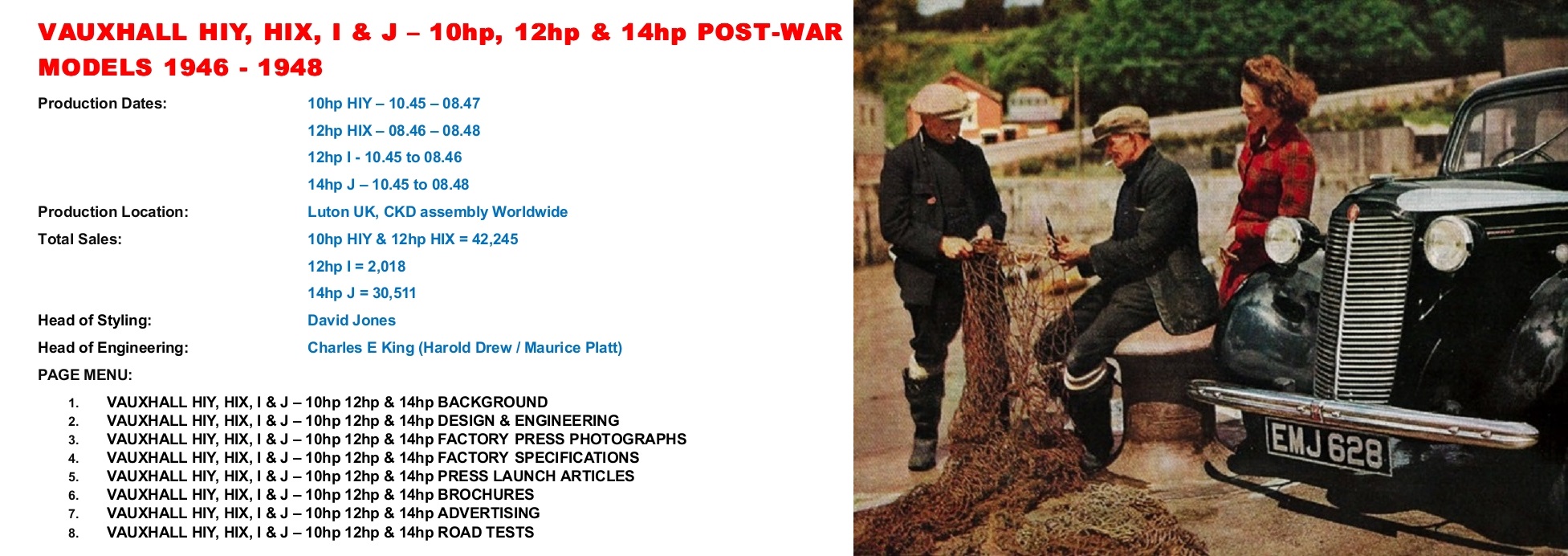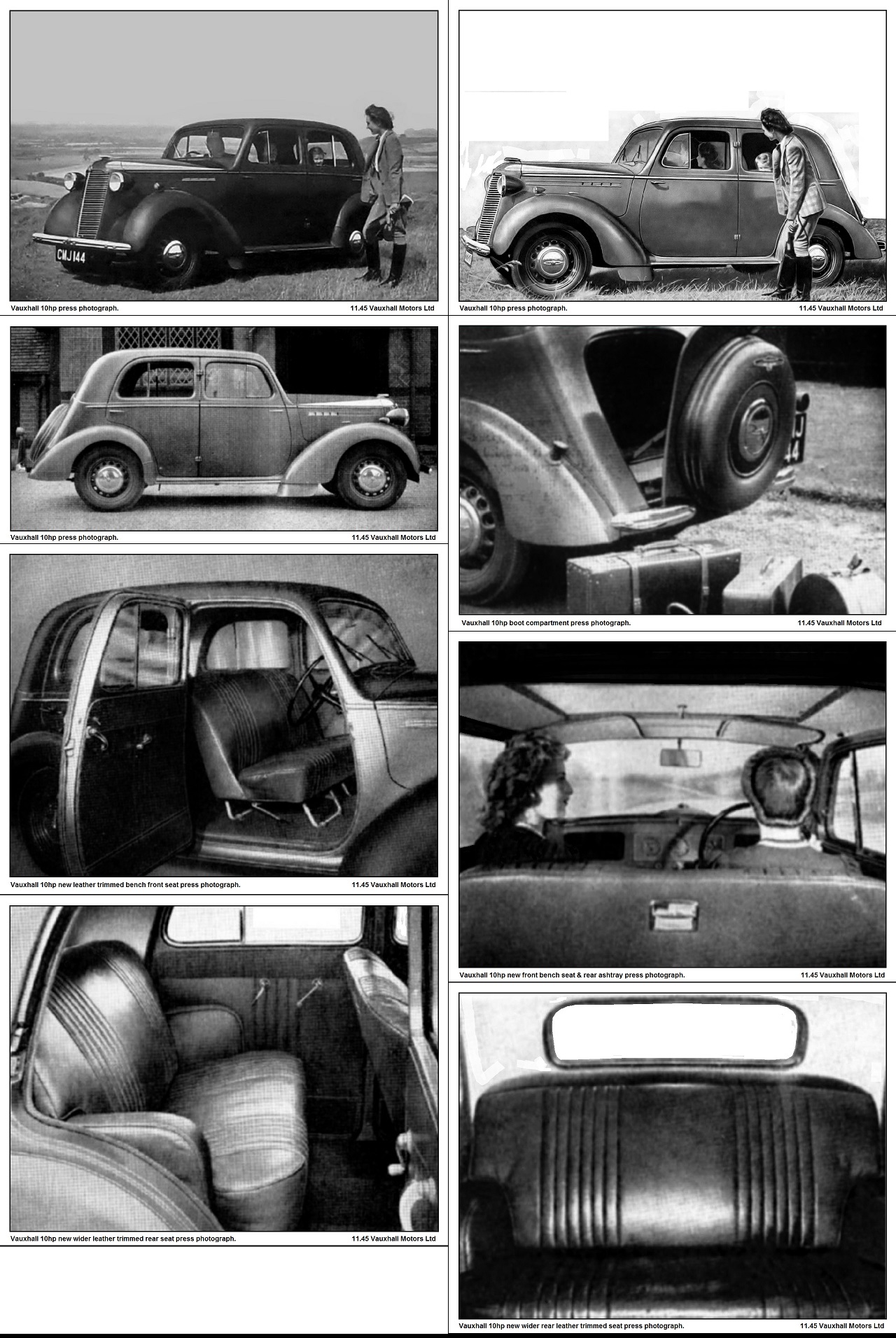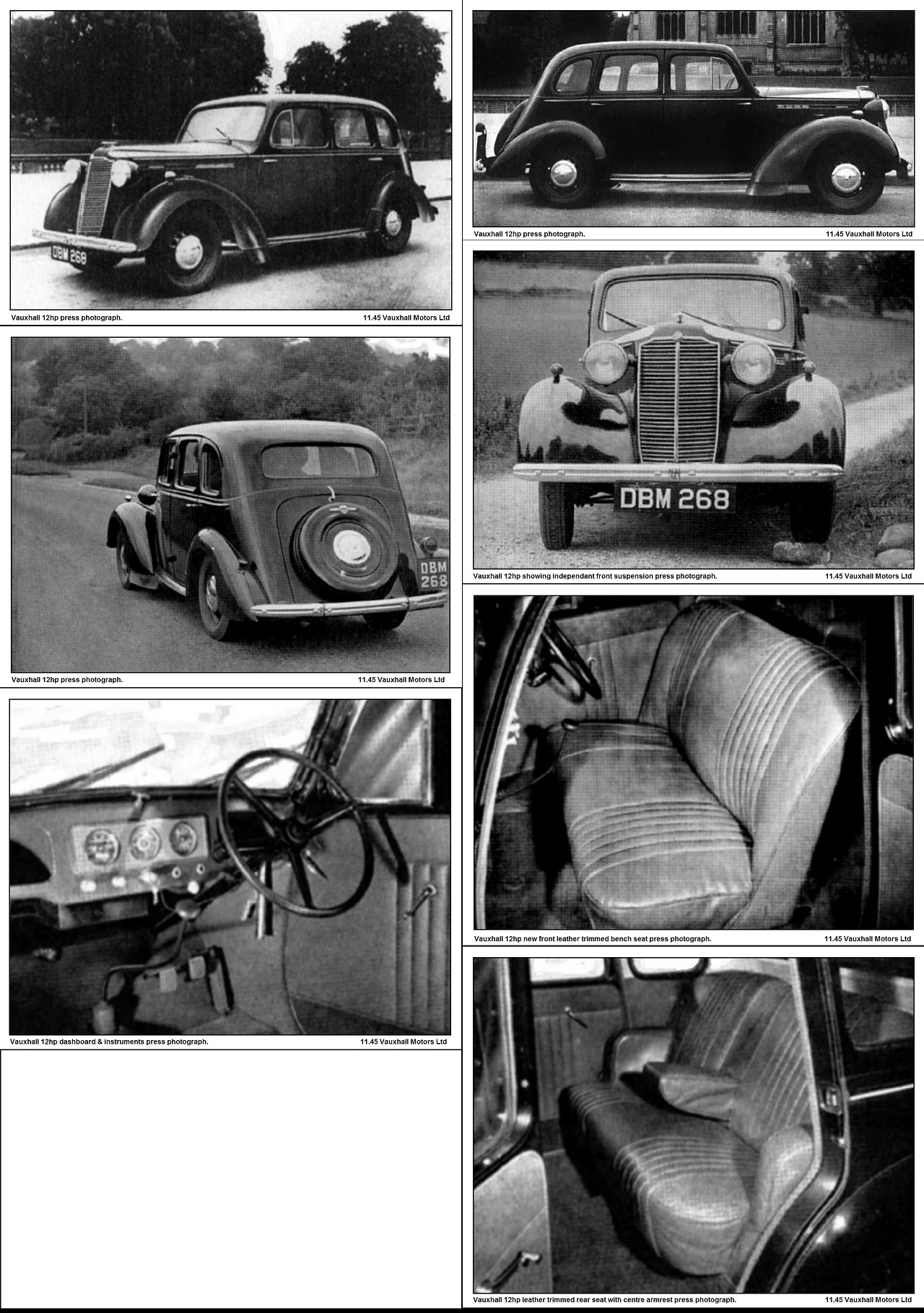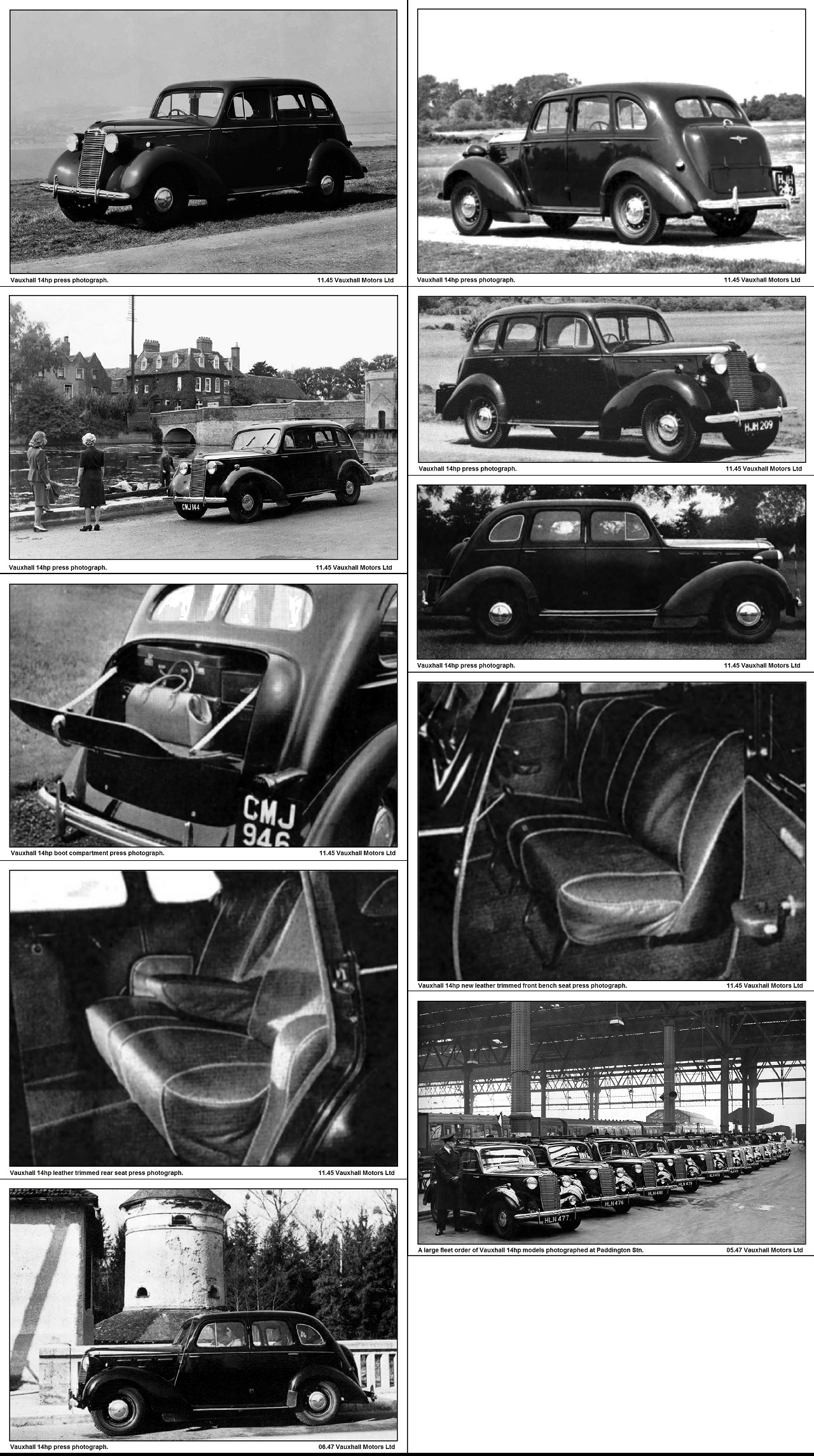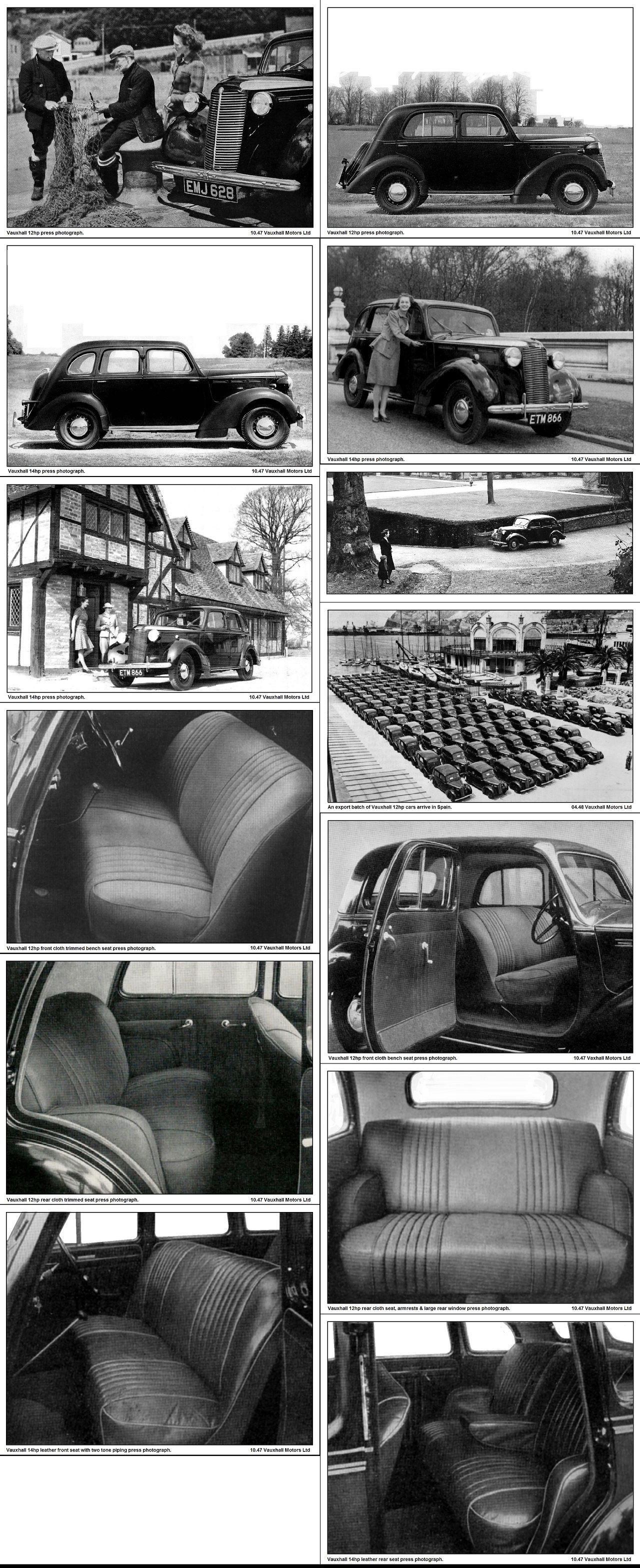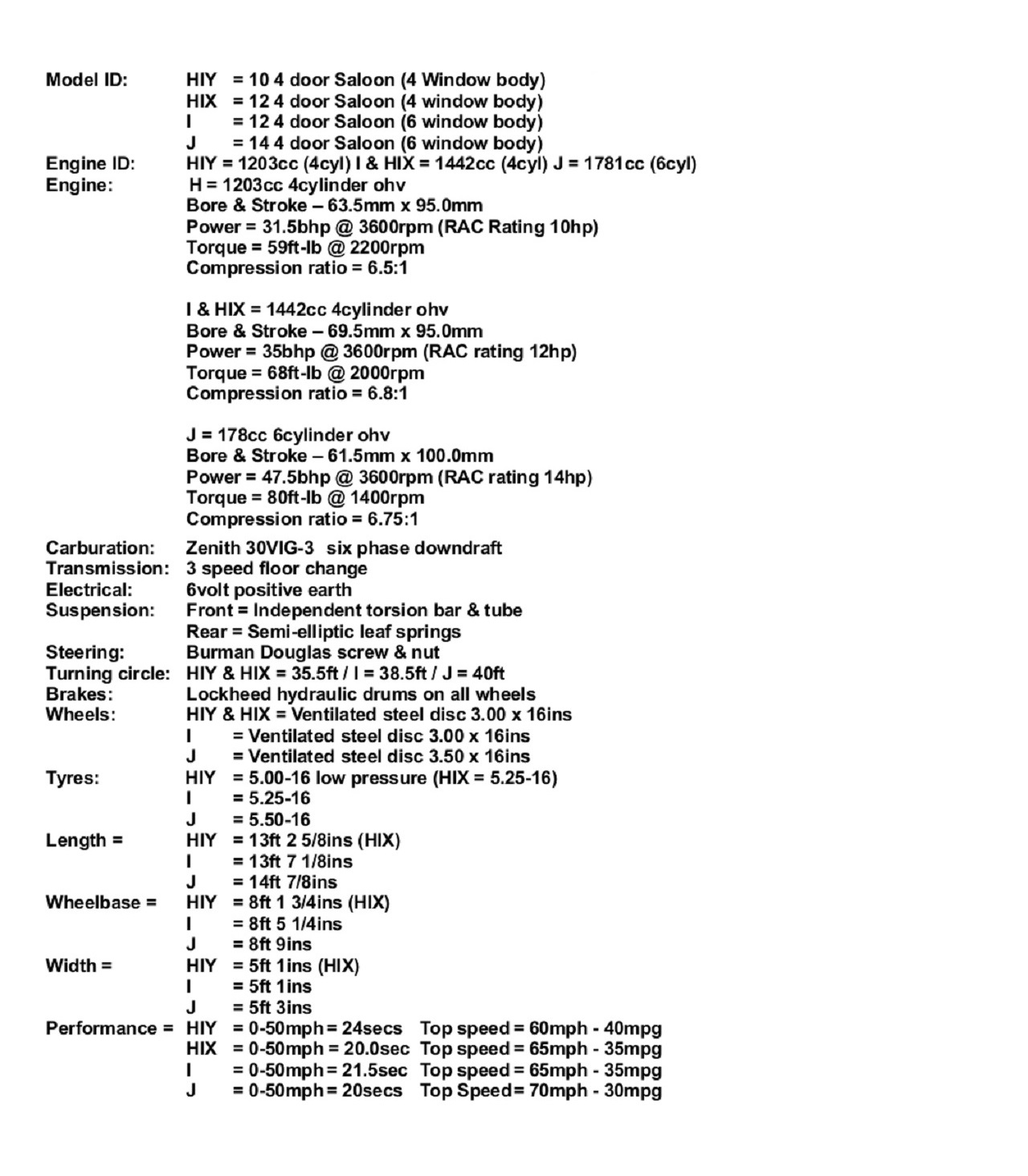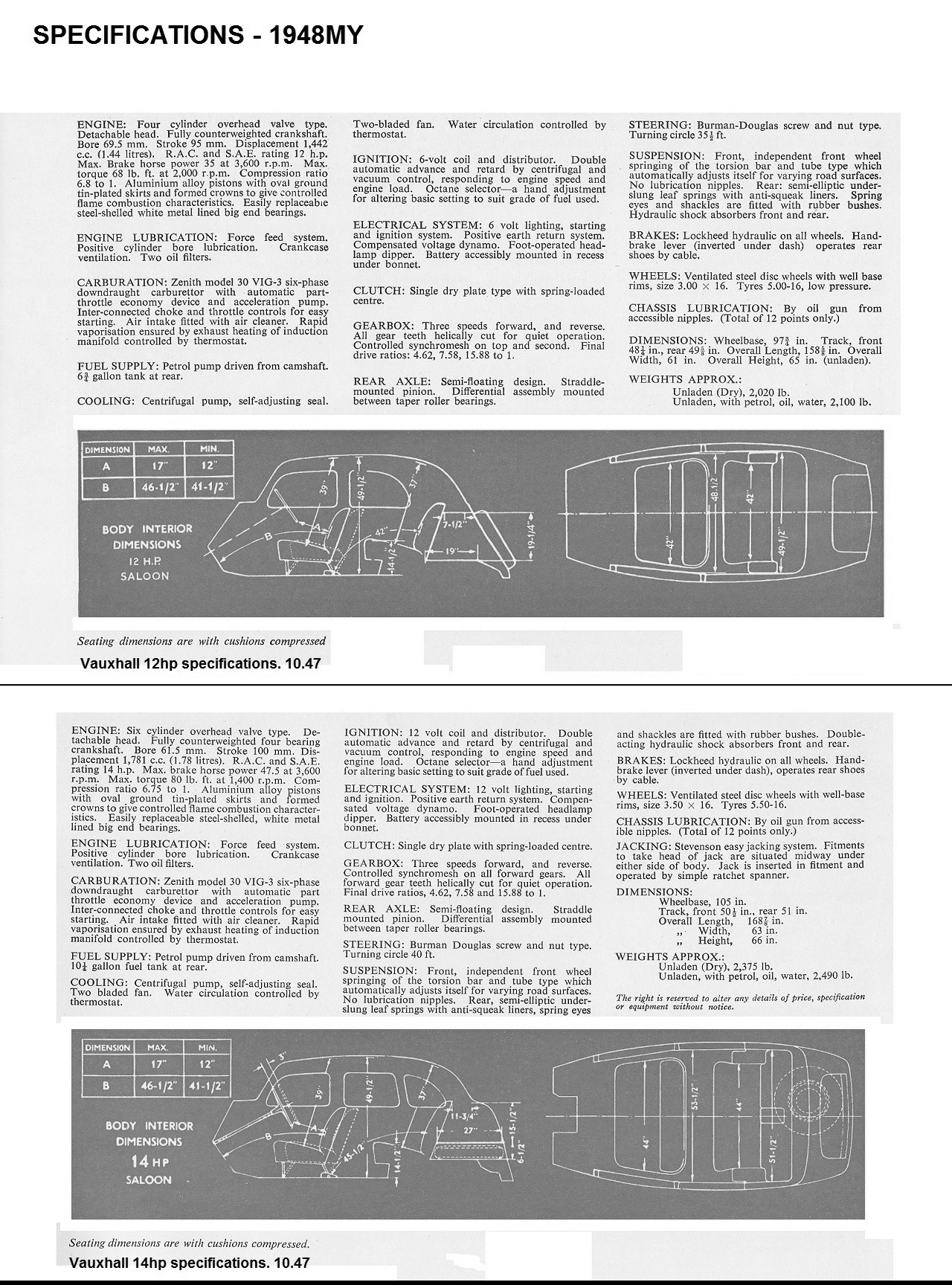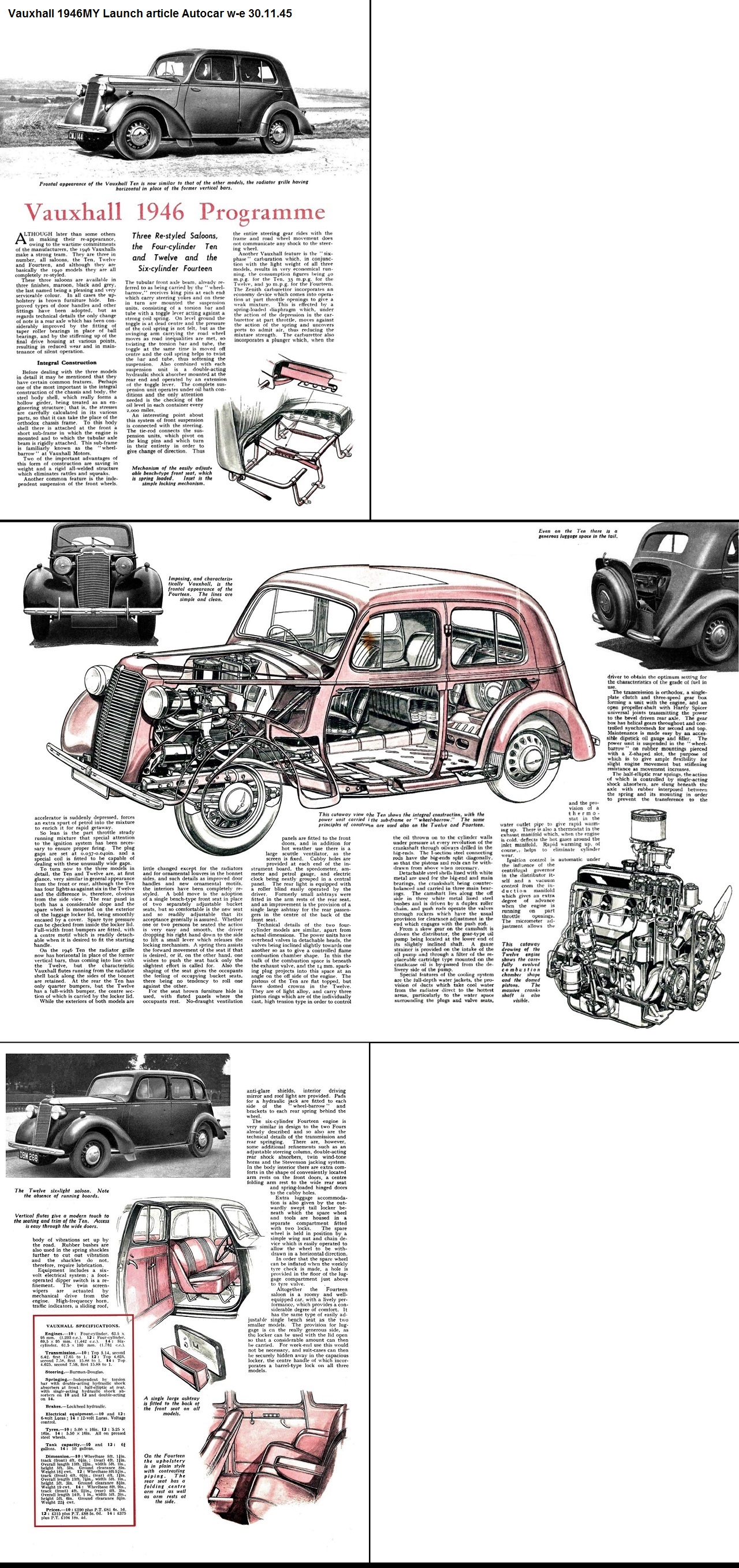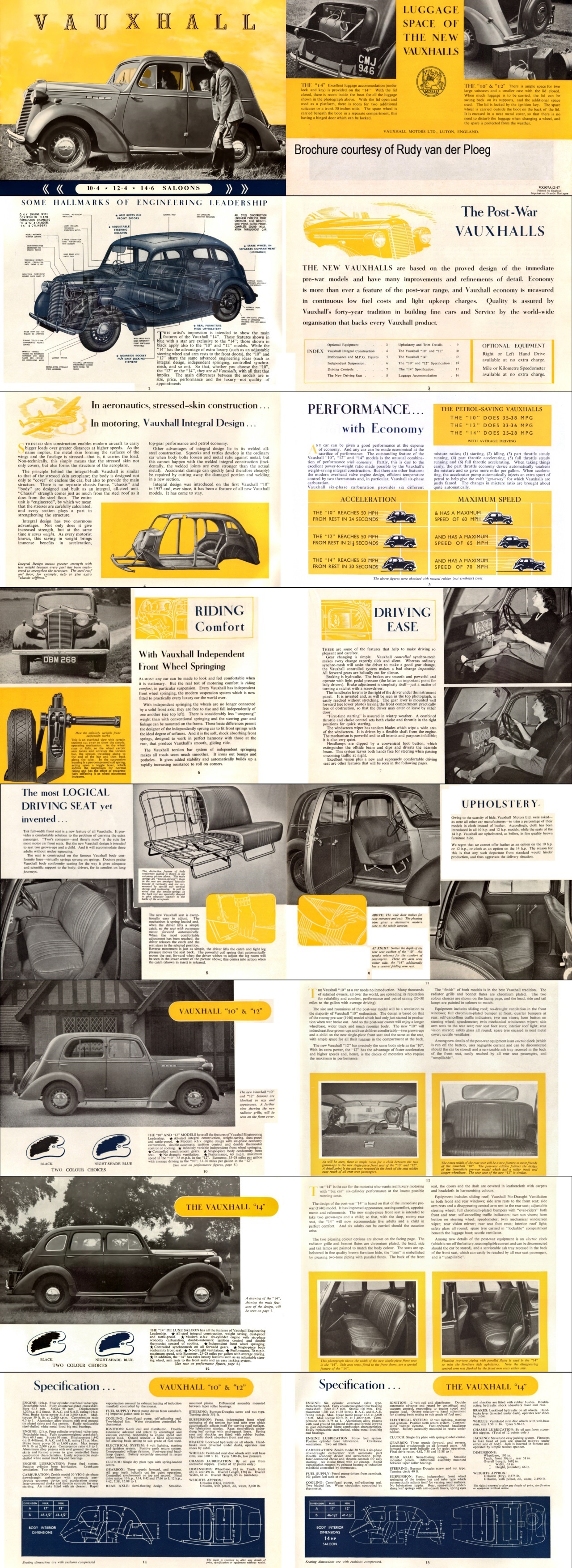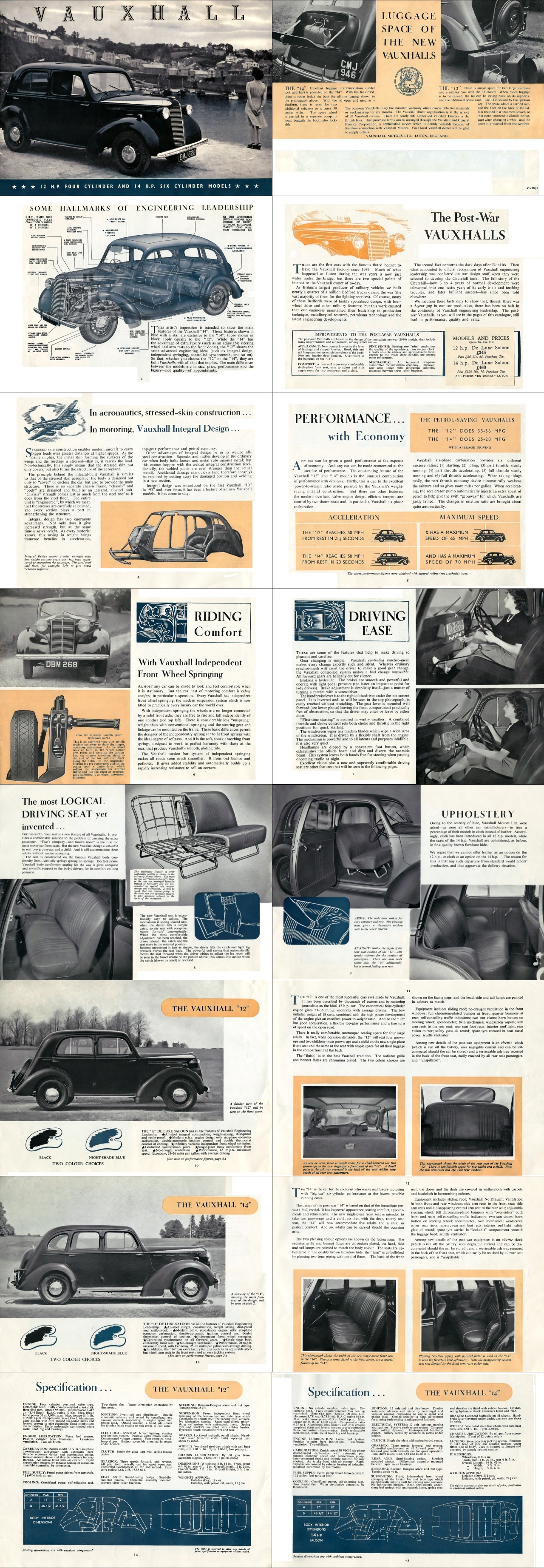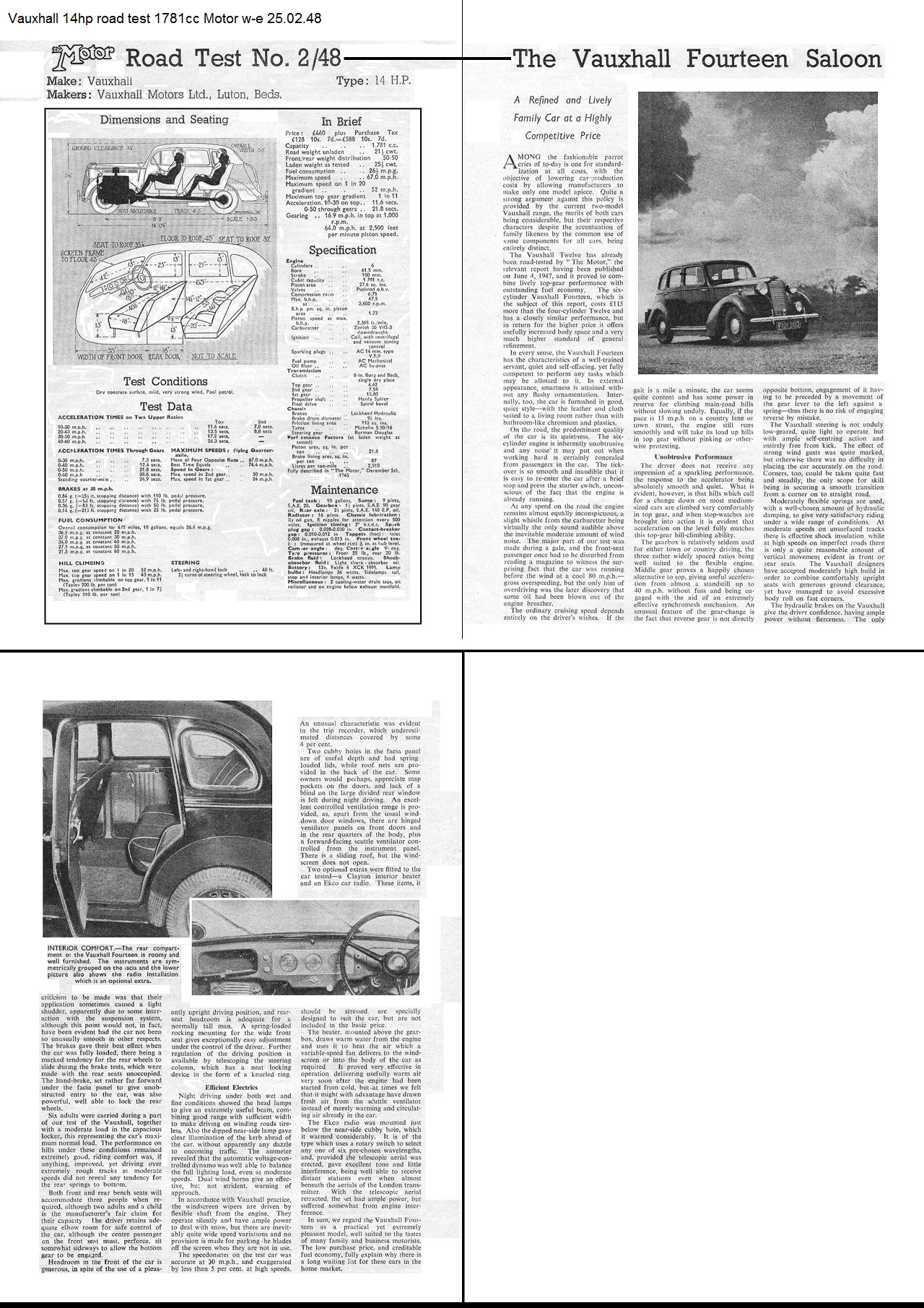Vauxhall were among the first to start some limited civilian
production in August 1945, beginning with Bedford trucks, which had
been produced during the war anyway. This was closely followed by
the Bedford 5/6cwt & 10/12 cwt vans and eventually Vauxhall car
production began in earnest during mid-September 1945 with a
minimum 75% going for export, limited sales to British motorists
commenced in November.
The Vauxhall 1946 model year cars were essentially the pre-war
specification models sold briefly before production ceased in May
1940.
The 1203cc 10hp (now designated HIY) was only re-introduced as a
Deluxe four door saloon with the slightly longer and wider body
which had been big news when introduced for the 1940 model year but
was only produced in tiny numbers before the outbreak of WWII.
Unfortunately, the attractive 2 door coupe did not go back into
production for no other reason than to streamline production, the
1442cc “I” 12hp and the 6 cylinder 1781cc “J” 14hp resumed
production both only available as a Deluxe Saloon with a 6-side
window body style.
Vauxhalls marketing department tried their best to make the 1946
models seem as “new” as possible but there were no major changes.
The minor alterations included: New bonnet louvres in the form of
lancing and shaped louvres, head, side & tail lights painted to
match the colour of the body, new more robust door handles, new
radiator grille with horizontal bars for the 10hp, bumper
over-riders on the 14hp, bench front seating, all seats finished in
brown leather, revised door trim, an electric clock, a spill proof
rear ashtray mounted in the back of the front seat and a modified
Zenith 30VIG-3 carburettor to improve economy although the quoted
power outputs were slightly lower as a consequence of the anaemic
low octane “pool” petrol that was available at the time. An
improved, stiffer, rear axle design was fitted with the
differential assembly mounted between taper roller bearings. The
choice of colour for all three models was restricted to Black,
Maroon & Florador Blue.
In a very short time Vauxhall dealers were quoting a 2 year waiting
list in Britain for a new car, van or truck caused by almost 80% of
all Vauxhall & Bedford output from Luton going overseas. This
situation was common to all British motor manufacturers but focus
on export markets caused many domestic manufacturers huge
reliability problems in territories with extreme weather
temperature swings or very poor road conditions, fortunately for
Vauxhall Alex Taub had insisted on much higher standards, set by
General Motors in the US, for cold starting and hot weather engine
cooling than was generally adhered to in Britain but this now paid
dividends for Vauxhall & Bedford in many overseas
markets.
In August 1946, the “I” 12hp was dropped and replaced by the “H”
12hp (designated HIX) using the same body as the 10hp (HIY) but
with a higher ratio back axle and with both models selling for the
same price. The 10hp was then dropped altogether in August 1947
after the government introduced a flat rate road tax system and
meant that Vauxhall were able to streamline car production still
further.
The 1948 model year 12hp & 14hp models were slightly revised.
Following a request from the Government, like all motor
manufacturers agreed to limit the availability of leather use in
the interior trim. Consequently, all 12hp models were fitted with
cloth seat upholstery with only the lower volume 14hp models
continuing with leather interior trim. Colour choice was reduced
from 3 to 2, Black and Night-Shade Blue. Slightly narrower tyres
were fitted to the 12hp, 5.00x16 vs 5.25x16, which reduced the
turning circle from 38.5ft to 35.5ft. The 12hp & 14hp continued
in production until August 1948 when they were replaced by the
Wyvern and Velox L Type models.
As soon as the pre-war models were in production work began
urgently on replacements. Maurice Platt in Vauxhalls Engineering
Department began experiments on over-boring the 6cylinder engine to
the maximum 2275cc ready for the future model applications, these
test engines were fitted to 14hp test mules to evaluate reliability
and performance, which was a quantum leap over the 1781cc units,
and required very careful handling. Several of these mules ended up
in a ditch because the “J” chassis & braking struggled to cope
with the increase in power.
Australia was always an important market for Vauxhall and GM Holden
not only imported fully built cars but also locally assembled cars
from CKD kits supplied from Britain. In addition, they modified
several models to particularly suite Australian conditions. The
10hp was one such model which they sold as a Wyvern from 1938 until
1941 and resumed again in 1946 using the pre-war tooling and
featured a six-light body. The model was sold as a Saloon and also
a roadster called the Caleche, the latter being a 2-door based on
the Bedford Van which still used a separate chassis with a folding
windscreen and using the HIY 10hp 1203cc
engine.
